Phong Nha-Ke Bang National Park: A Natural Masterpiece in Vietnam
Have you ever wondered where you can find the world’s largest cave, ancient karst formations, and a haven of biodiversity all in one place? Phong Nha-Ke Bang National Park offers all this and more, making it one of Vietnam’s most breathtaking destinations. Known for its 300 caves, lush forests, and vibrant rivers, it’s a paradise for adventurers and nature lovers alike. Let’s dive into what makes this UNESCO World Heritage Site so extraordinary.
Recognized for its geological wonders and unique biodiversity, this park stands as one of Southeast Asia’s natural treasures. Covering over 857 km², Phong Nha-Ke Bang boasts attractions like Sơn Đoòng, the largest cave on Earth, and Phong Nha Cave, home to the longest underground river. The park also teems with rare flora and fauna, offering an unforgettable experience for explorers, photographers, and wildlife enthusiasts. Whether you’re into adventure, ecology, or scenic beauty, there’s something here for everyone.
But this is just the beginning! From jaw-dropping cave systems to eco-tourism adventures, there’s so much more to uncover in this incredible park. So, what makes Phong Nha-Ke Bang a must-visit for travelers worldwide? Read on to discover everything you need to know, and don’t forget to check out our detailed guides on PhongNhaHomestay.com for expert insights!
Overview of Phong Nha-Ke Bang National Park
A UNESCO Gem with Unmatched Natural Beauty
Phong Nha-Ke Bang National Park, a UNESCO World Heritage Site, is a treasure trove of natural wonders located in Quảng Bình Province, Vietnam. Spanning over 857 square kilometers, this park is globally recognized for its ancient karst landscapes, which date back 400 million years, making it the oldest major karst system in Asia. Its geological diversity includes towering limestone peaks, underground rivers, and vast cave systems.
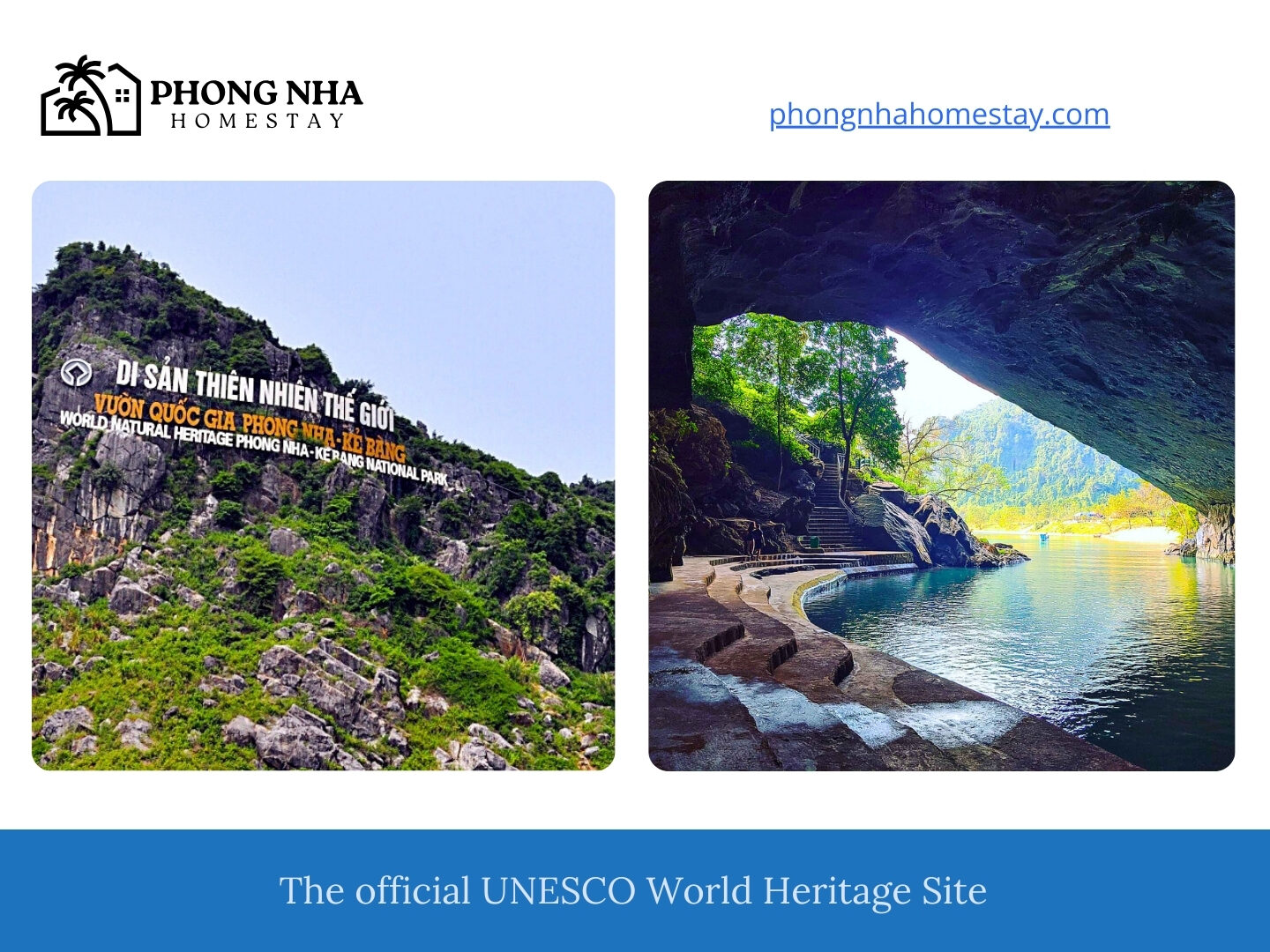
Geological Marvels and Record-Breaking Caves
The park is renowned for its karst formations and record-setting caves. Among its 300 caves, highlights include:
- Sơn Đoòng Cave: The world’s largest cave with chambers towering up to 200 meters.
- Phong Nha Cave: Famous for its 13,969-meter underground river and stunning stalactite formations.
- Paradise Cave (Thiên Đường): Known for its breathtaking 31-kilometer stretch of limestone beauty.
These caves aren’t just natural wonders—they are evidence of the Earth’s dynamic history and a playground for adventure seekers.
Biodiversity Hotspot
Phong Nha-Ke Bang isn’t just about caves; it’s a biodiversity hotspot home to rare and endangered species. The park shelters over 751 species of plants and 381 species of vertebrates, including iconic creatures like the Hatinh langur and the elusive saola. Visitors can explore lush evergreen forests and spot wildlife unique to this region, making every trip a thrilling discovery.
Visitor Information at a Glance
If you’re planning to visit, here’s what you need to know:
- Address: Phong Nha-Ke Bang National Park, Quảng Bình Province, Vietnam
- Opening Hours: 7:00 AM – 4:00 PM
- Entry Fee: Varies by attraction, typically starting at 150,000 VND (~$6 USD)
Pro Tip: Visit during the dry season (April to August) for clear skies and easier cave access.
Natural Features and Attractions
Jaw-Dropping Karst Landscapes
Phong Nha-Ke Bang National Park is celebrated for its impressive karst formations, carved by nature over millions of years. These geological masterpieces include towering limestone peaks, vast dolines, and underground caves. Visitors are often awestruck by the cone and tower karsts, which create a dramatic and otherworldly landscape. The Nam Aki River flows beneath the limestone, shaping hidden wonders waiting to be explored.
World-Famous Caves
The park boasts some of the most incredible caves in the world, each with unique features:
- Sơn Đoòng Cave: The world’s largest cave, with chambers over 200 meters high and 150 meters wide. It is a must-see for thrill-seekers.
- Phong Nha Cave: Known for its 13,969-meter underground river, accessible via boat for an unforgettable journey.
- Dark Grotto (Hang Tối): Perfect for adventure lovers with its combination of kayaking, swimming, and mud bathing.
- Paradise Cave (Thiên Đường): An expansive and scenic limestone marvel spanning 31 kilometers.
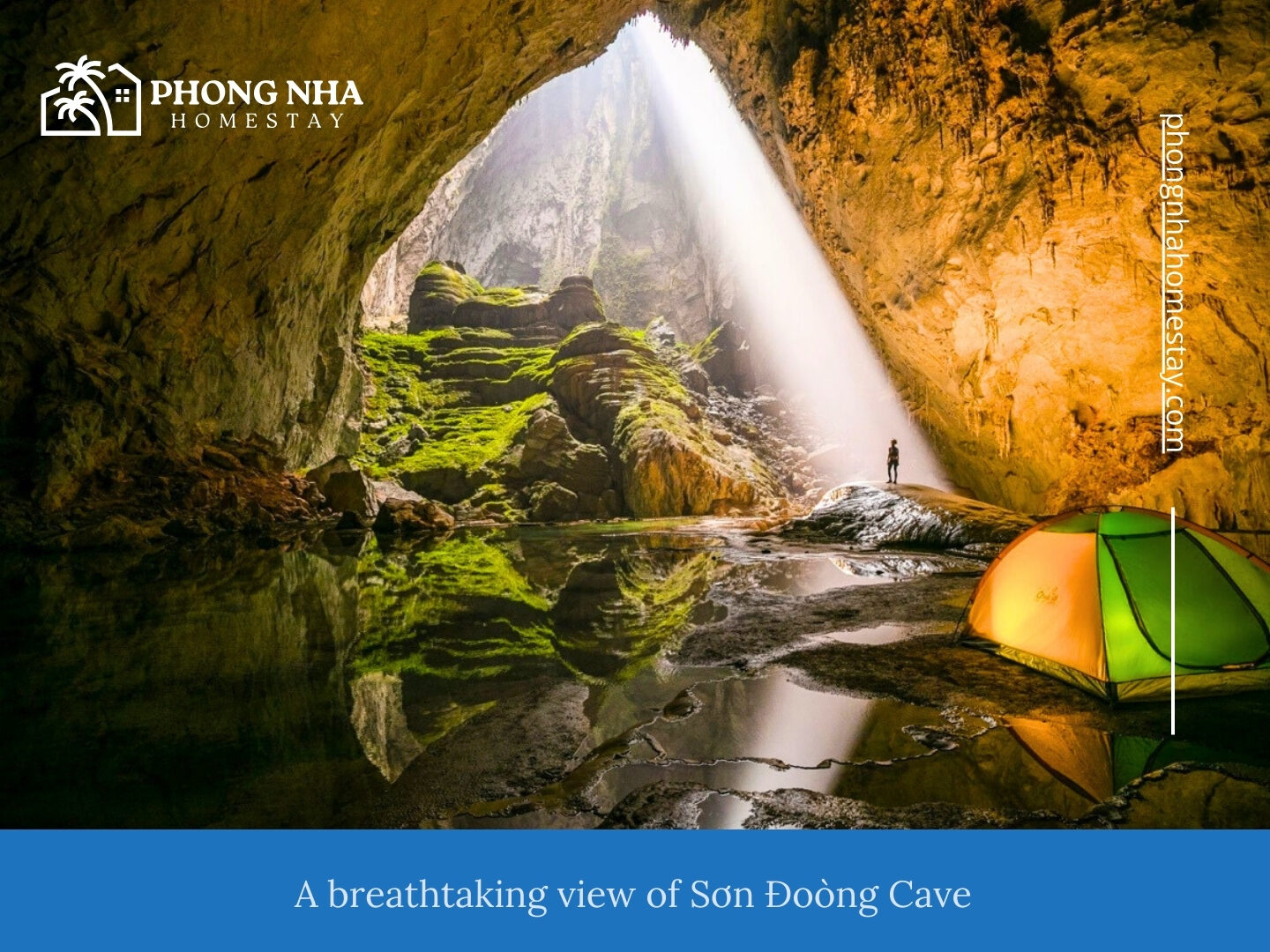
Rivers and Waterfalls
Two iconic rivers, the Son and Chay Rivers, define the park’s enchanting waterways. These rivers not only carve through caves but also offer serene boat rides and picturesque views. Several waterfalls, like the Madame Loan Waterfall, enhance the park’s allure. Pro Tip: Visit Trạ Ang Stream, a hidden gem for cooling off in crystal-clear waters after exploring the caves.
Flora and Fauna
The park’s biodiversity is just as impressive as its geology. Over 751 species of plants thrive here, including rare orchids and ancient Calocedrus trees. The forests shelter animals like the endangered Hatinh langur and Asian black bear. Bird enthusiasts will find delights such as the red-collared woodpecker and the rare Vietnamese pheasant.
Essential Visitor Info
Here’s what you need to plan your visit to these natural wonders:
Cave Tickets:
- Sơn Đoòng: $3,000 USD (guided expeditions only).
- Phong Nha Cave: 150,000 VND (~$6 USD).
- Paradise Cave: 250,000 VND (~$10 USD).
- Boat Tours: Available at the Phong Nha Tourism Center for the Son River and Phong Nha Cave.
Pro Tip: Book early for Sơn Đoòng tours; slots fill up months in advance.
Cultural and Historical Significance
Ancient Roots and Champa Heritage
Phong Nha-Ke Bang National Park isn’t just about breathtaking natural beauty; it also holds deep historical and cultural significance. The region’s caves, like Phong Nha Cave, contain ancient Champa inscriptions dating back to the 9th century. These carvings provide insight into the beliefs and practices of the Champa civilization, making the park a treasure trove for history enthusiasts.

Historical Events and Local Legends
The park’s historical relevance extends beyond ancient times. During the Vietnam War, the area served as a critical supply route on the Ho Chi Minh Trail, with its caves providing shelter and storage for soldiers and supplies. Local legends further enrich the park’s cultural tapestry, including tales of the Lion Rock Formation in Phong Nha Cave symbolizing strength and protection.
Sacred and Historical Artifacts
Visitors can explore sacred altars and ancient steles within the caves, which are remnants of Buddhist and Champa religious practices. Tiên Sơn Cave is particularly notable for its stalagmites that, when struck, produce sounds like drums—a mystical experience tied to local folklore. These artifacts and formations reflect the intertwining of nature and human history in this region.
Visitor Highlights
For those keen to explore the cultural heritage, here are the must-visit spots:
Phong Nha Cave:
- Cultural Feature: Champa inscriptions and ancient artifacts.
- Hours: 7:00 AM – 4:00 PM.
- Pro Tip: Hire a guide to decode the historical significance of carvings.
Tiên Sơn Cave:
- Unique Feature: “Drumming stalagmites” tied to folklore.
- Entry Fee: 80,000 VND (~$3 USD).
Ho Chi Minh Trail Remnants:
- Significance: War-era shelters and historical routes.
- Access: Included in many local tours.
These sites not only enrich your understanding of the park but also immerse you in its profound cultural and historical narrative.
Activities and Experiences
Cave Exploration: Journey into the Depths
Phong Nha-Ke Bang National Park offers unparalleled opportunities for cave exploration. Adventure enthusiasts can delve into the Sơn Đoòng Cave, the largest in the world, where immense chambers and unique ecosystems await discovery. For a more family-friendly experience, Phong Nha Cave provides an easy-access boat tour along its underground river. Meanwhile, Paradise Cave wows visitors with its dramatic stalactites and stalagmites, perfect for photography.
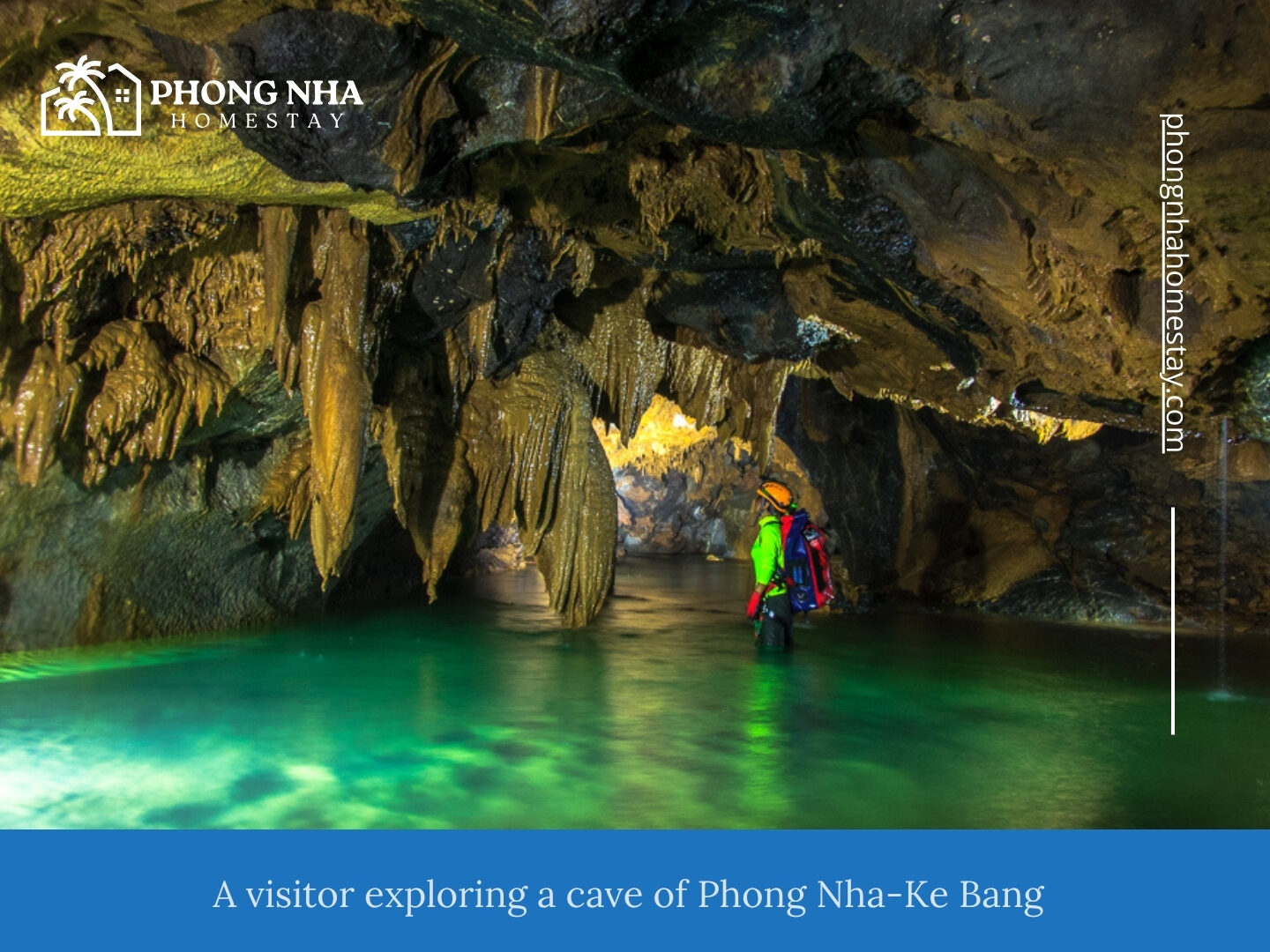
Eco-Tourism and Jungle Treks
Immerse yourself in the park’s rich biodiversity by embarking on guided jungle treks. Discover towering Calocedrus trees, lush evergreen forests, and the calls of rare birds like the Vietnamese pheasant. Trails like the Nuoc Mooc Eco-Trail offer scenic walks combined with a refreshing swim in crystal-clear streams, making it ideal for families and nature lovers.
Adventure Sports: Thrills in Nature
For adrenaline seekers, the park boasts numerous outdoor activities. Kayak along the Chay River, where you can navigate through serene waters and vibrant surroundings. Climbing enthusiasts can tackle the towering limestone karsts for panoramic views. Pro Tip: Try ziplining over the Dark Grotto entrance for an unforgettable thrill combined with the chance to explore the cave’s unique mud baths and clear pools.
Practical Information for Visitors
Plan your activities with these details in mind:
Cave Access and Tours:
- Sơn Đoòng: Guided tours only, $3,000 USD.
- Phong Nha Cave: 150,000 VND (~$6 USD).
- Paradise Cave: 250,000 VND (~$10 USD).
Eco-Trail:
- Nuoc Mooc Eco-Trail: Entry fee 80,000 VND (~$3 USD).
- Hours: 7:00 AM – 4:00 PM.
- Adventure Gear: Many activities require booking guides or renting equipment at the Phong Nha Tourism Center.
Each activity offers a unique way to engage with the park’s beauty, ensuring visitors of all interests and fitness levels have something memorable to enjoy.
Travel Information and Logistics
Getting to Phong Nha-Ke Bang National Park
Reaching Phong Nha-Ke Bang National Park is straightforward, with multiple transportation options available. Đồng Hới, the nearest city, serves as a convenient base with its well-connected airport, railway station, and bus terminals. Visitors can fly into Đồng Hới Airport, which offers direct connections to Hanoi and Ho Chi Minh City, or opt for the scenic train route via the Hanoi-Saigon Railway. Pro Tip: Arrange a private car or shuttle from Đồng Hới to the park for the fastest access (approximately 45 minutes).
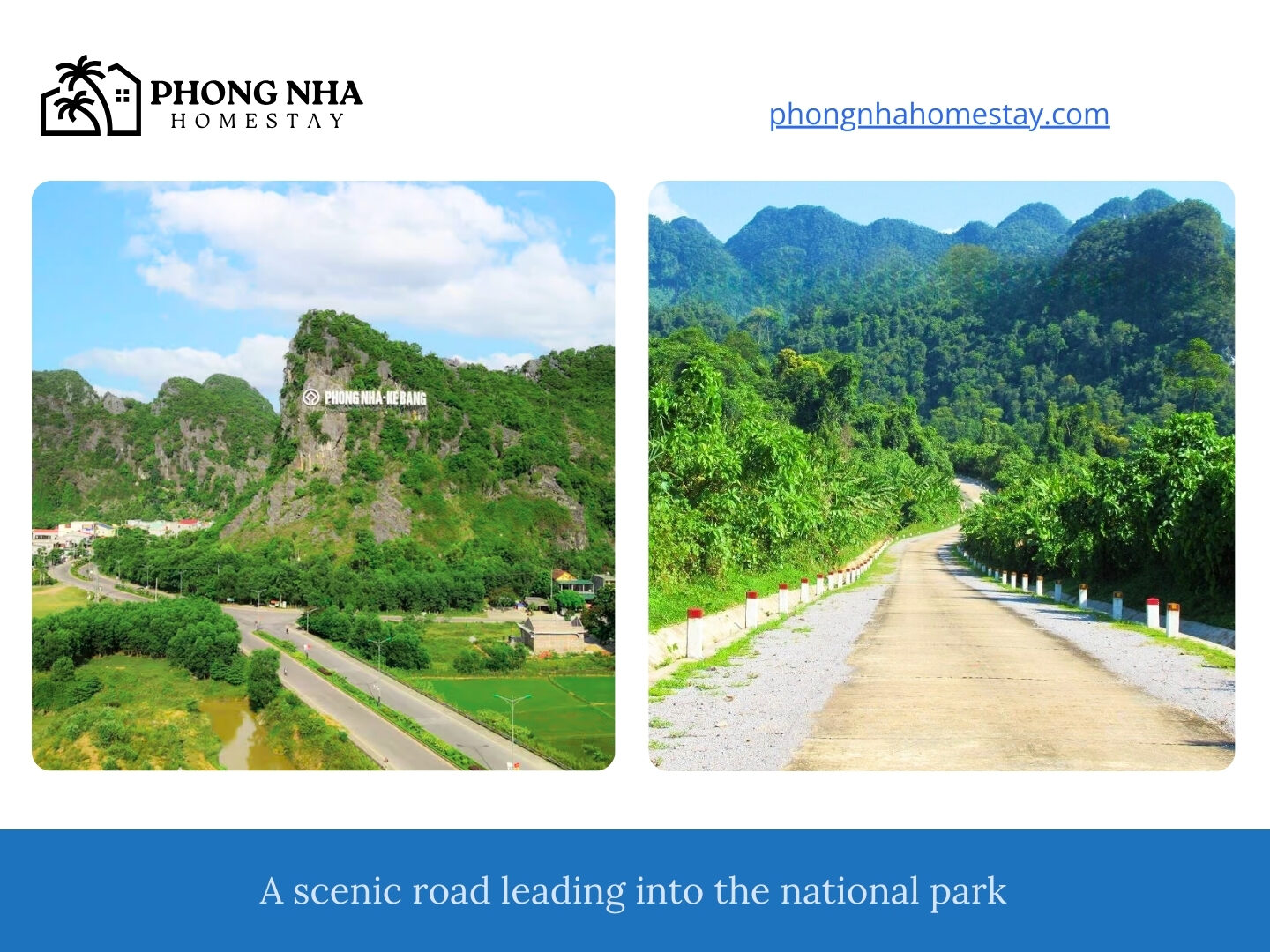
Best Time to Visit
Plan your trip during the dry season, typically between April and August, for ideal weather. During this time, clear skies and warm temperatures make cave exploration and outdoor activities more enjoyable. The monsoon season (September to December) sees heavy rainfall, which may limit access to certain areas, but it’s perfect for those seeking lush, green landscapes.
Accommodations and Dining
Phong Nha offers a range of accommodations, from homestays to luxurious resorts, ensuring there’s something for every traveler. Phong Nha Homestay is an excellent choice for an authentic local experience, featuring comfortable amenities and friendly hosts. For dining, try local specialties like bánh xèo or sour shrimp soup at nearby restaurants.
Essential Visitor Info
Here’s a handy list to make your visit seamless:
Getting There:
- By Air: Đồng Hới Airport (45 km from the park).
- By Train: Đồng Hới Station on Hanoi-Saigon Railway.
- By Road: Accessible via the Ho Chi Minh Highway.
Opening Hours: 7:00 AM – 4:00 PM.
Entry Fee: Ranges between 150,000 VND ($6 USD) and 250,000 VND ($10 USD), depending on the attraction.
Pro Tip: Book accommodations and tours early during peak season (May to August) to secure the best options.
With its accessibility and range of amenities, Phong Nha-Ke Bang is ready to offer an unforgettable travel experience.
Conservation and Sustainability
Protecting Biodiversity
Phong Nha-Ke Bang National Park is home to an incredible array of wildlife, including over 751 species of plants and 381 species of vertebrates, many of which are endangered. Conservation efforts focus on safeguarding species like the Hatinh langur, saola, and Asian black bear, which thrive in the park’s dense forests. Local and international organizations, including Fauna and Flora International (FFI), support these efforts through funding and training programs.
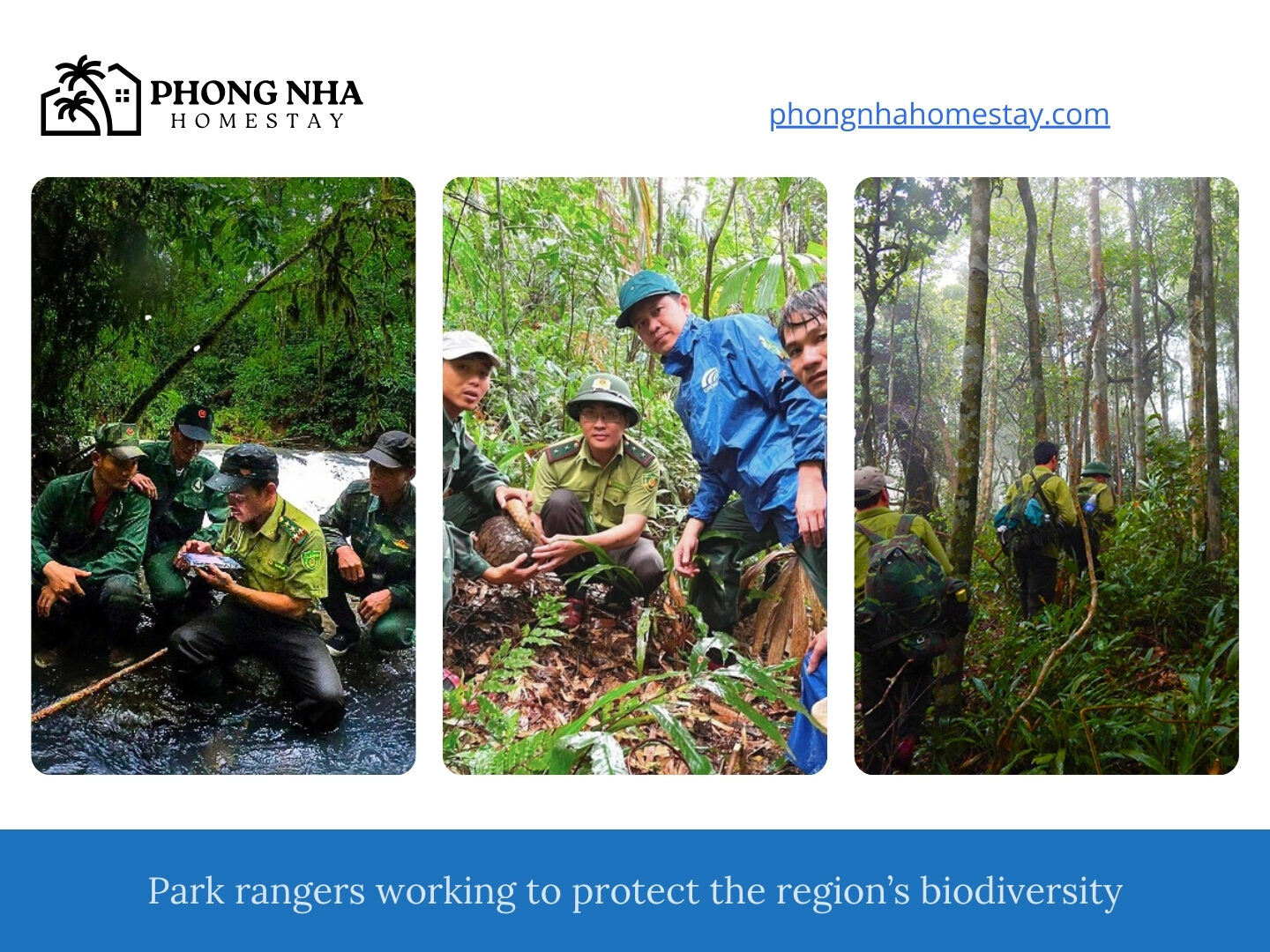
Threats to the Ecosystem
Despite its protected status, the park faces challenges such as illegal logging, hunting, and the pressures of increased tourism. Infrastructure developments, like road expansions, have impacted wildlife habitats, particularly for species sensitive to human activity. Pro Tip: Visitors can contribute to conservation by supporting eco-friendly tours and respecting the park’s regulations, including staying on designated trails and avoiding waste pollution.
Sustainable Tourism Initiatives
The park is a leading example of balancing tourism and conservation. Guided tours to attractions like Sơn Đoòng Cave and the Nuoc Mooc Eco-Trail are designed to minimize environmental impact while educating visitors about the park’s natural wonders. Additionally, community-based projects, such as training locals as guides or boat operators, provide sustainable livelihoods and reduce reliance on resource exploitation.
How You Can Help
As a visitor, you play a crucial role in the park’s conservation efforts. Here’s how:
- Choose Responsible Operators: Opt for tours certified as eco-friendly.
- Respect Wildlife: Avoid feeding or disturbing animals.
- Support Local Communities: Purchase local products and services to encourage sustainable practices.
- Follow Park Guidelines: Stay on marked trails, carry out your waste, and avoid using single-use plastics.
Phong Nha-Ke Bang National Park stands as a testament to the harmony between nature and sustainable tourism, thanks to collaborative efforts between conservation groups, local communities, and mindful travelers.
Unique Selling Points (USPs) of Phong Nha-Ke Bang National Park
Home to the World’s Largest Cave
The park’s crown jewel, Sơn Đoòng Cave, is a record-breaking marvel that holds the title of the largest cave on Earth. This colossal natural wonder features chambers towering over 200 meters high and lush ecosystems thriving within its depths. Visitors can experience the surreal beauty of its underground jungle and even witness clouds forming inside the cave—a sight that’s truly unique.

Geological Wonders and Karst Landscapes
Phong Nha-Ke Bang boasts one of the oldest karst landscapes in Asia, dating back over 400 million years. Its limestone peaks, underground rivers, and expansive caves make it a geological treasure. Highlights include:
- Phong Nha Cave: Famous for its 13,969-meter-long underground river and stunning rock formations.
- Paradise Cave: Spanning 31 kilometers, it offers breathtaking views of stalactites and stalagmites, ideal for photographers and nature lovers.
Biodiversity Hotspot
The park is a biodiversity haven, sheltering rare species like the Hatinh langur and the saola, often called the “Asian unicorn.” Its lush forests, comprising over 751 plant species, include rare orchids and ancient trees, creating a paradise for ecotourists and wildlife enthusiasts.
Adventure and Exploration Opportunities
Phong Nha-Ke Bang is a playground for thrill-seekers. From exploring the challenging depths of Sơn Đoòng Cave to ziplining over the Dark Grotto, the park offers unparalleled adventure. Kayaking along the Chay River or trekking the Nuoc Mooc Eco-Trail combines adrenaline with scenic beauty.
Visitor Information
Here are the highlights to plan your trip:
- Main Attractions: Sơn Đoòng, Phong Nha Cave, Paradise Cave.
- Activities: Ziplining, kayaking, jungle trekking.
Pro Tip: Book guided tours early for Sơn Đoòng as spots are limited and fill up months in advance.
Phong Nha-Ke Bang’s unique blend of record-breaking natural wonders, rich biodiversity, and thrilling adventures sets it apart as a must-visit destination.
Nearby Attractions and Extended Tours
Historical Sites: Ho Chi Minh Trail and War-Era Relics
The surrounding area of Phong Nha-Ke Bang National Park is rich in history. Explore remnants of the Ho Chi Minh Trail, which played a vital role during the Vietnam War. This network of paths and shelters offers visitors a glimpse into Vietnam’s resilience and ingenuity. Pair your visit with a stop at the Eight Ladies Cave, a tribute to war heroes who sought refuge during air raids.
Natural Wonders Beyond the Park
For those seeking additional natural beauty, nearby attractions include:
- Botanical Garden: A tranquil area with well-maintained trails and waterfalls, perfect for a family-friendly outing.
- Bang Hot Springs: Located in Le Thuy District, this natural hot spring is ideal for relaxation after exploring caves.
- Mooc Spring Eco-Trail: A short drive from the park, this scenic trail features wooden pathways, crystal-clear streams, and the chance for a refreshing swim.
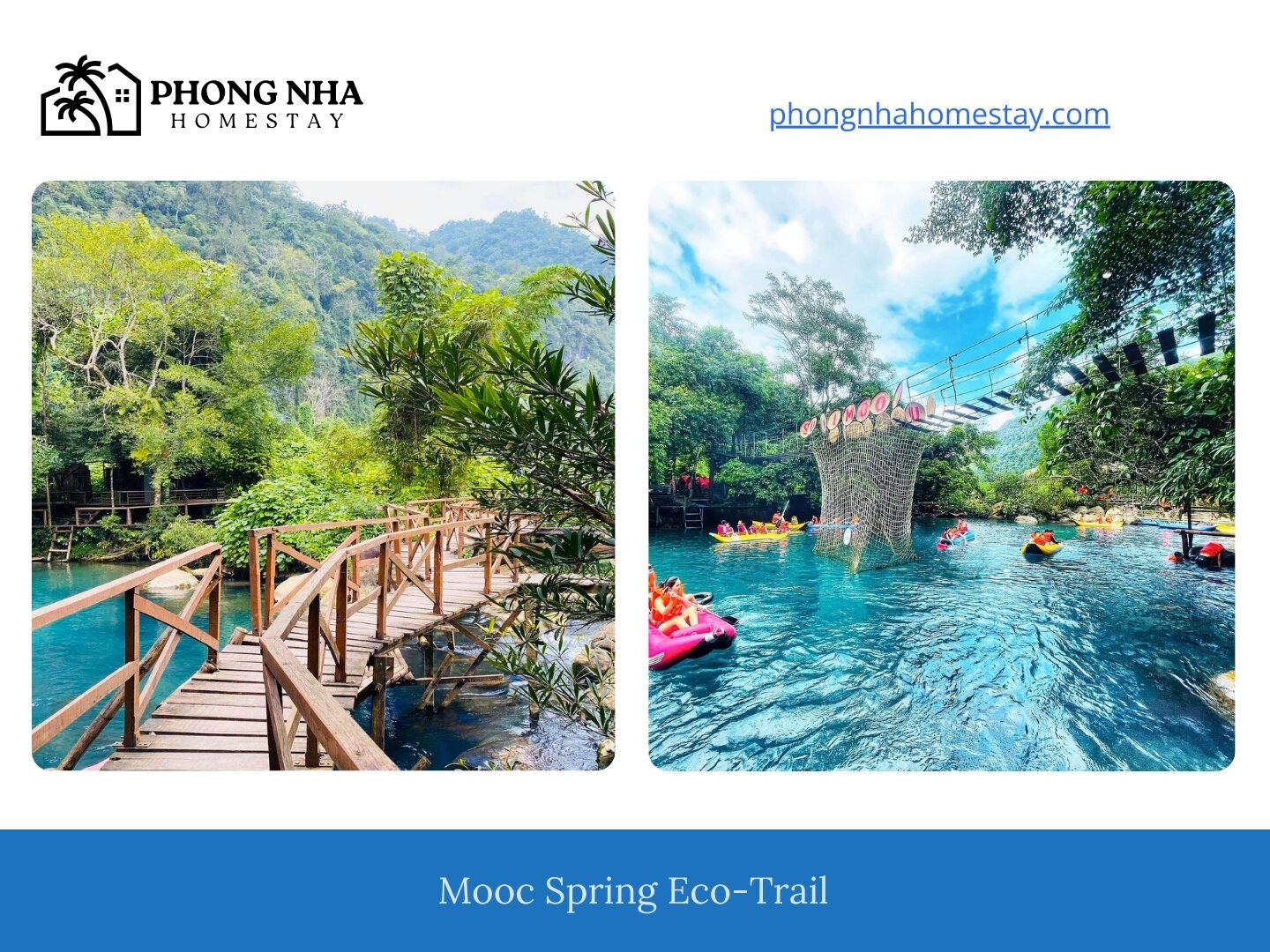
Cultural Villages and Local Experiences
Immerse yourself in the traditions of local communities by visiting nearby villages like Phong Nha Village, where you can enjoy authentic Vietnamese cuisine and crafts. For an even deeper cultural dive, participate in workshops on bamboo weaving or traditional fishing.
Extended Tours: Connecting to the Heritage Road
Phong Nha-Ke Bang is part of the “Middle World Heritage Road,” which links some of Vietnam’s most iconic UNESCO sites. Include these destinations in your itinerary for a richer experience:
- Hue Imperial City: A two-hour drive south, this ancient capital is a must-see for history buffs.
- Hoi An Ancient Town: Known for its lantern-lit streets and preserved architecture, it’s an enchanting stop further along the heritage road.
- My Son Sanctuary: Another UNESCO gem, this site boasts ancient Champa ruins nestled in the jungle.
Quick Facts for Travelers
- Ho Chi Minh Trail Sites: Accessible via local tours, with guides offering war-era insights.
- Bang Hot Springs: Entry fee 70,000 VND ($3 USD).
- Hue to Phong Nha: Approx. 4-hour drive; bus services and private transfers available.
Pro Tip: Combine your park visit with a tour of Hue for a balanced mix of nature and history.
With its blend of historical, cultural, and natural attractions, the region around Phong Nha-Ke Bang ensures your journey is packed with unforgettable experiences.
Visitor Tips and Recommendations
What to Pack for Your Visit
Preparation is key to enjoying Phong Nha-Ke Bang National Park to the fullest. Make sure you bring:
- Lightweight, moisture-wicking clothing: Perfect for jungle treks and cave explorations.
- Sturdy hiking shoes: Essential for navigating rocky terrains and slippery trails.
- Waterproof gear: Rain is common, especially during the monsoon season.
- Headlamp and gloves: Useful for cave tours requiring personal equipment.

Pro Tip: Avoid overpacking—local stores near the park offer basic supplies at reasonable prices.
Safety Precautions
The park’s terrain is stunning but can be challenging. Follow these safety tips:
- Stick to designated trails: Wandering off can disrupt wildlife and put you at risk.
- Always use authorized guides: They know the terrain and can provide essential safety information.
- Watch your step in caves: Wet surfaces and steep descents require caution.
Pro Tip: Carry a basic first-aid kit for minor injuries like cuts or insect bites.
Enhancing Your Experience
To make your trip even more memorable, consider these recommendations:
- Hire a Local Guide: Gain insights into the park’s history, biodiversity, and cultural significance.
- Visit Early: Beat the crowds and enjoy a more serene environment.
- Plan Around the Season: Dry season (April to August) is ideal for most activities, while the rainy season offers lush greenery.
- Sample Local Cuisine: Don’t miss dishes like bánh xèo and cháo hàu (oyster porridge) at nearby restaurants.
Quick Reference for Visitors
- Entry Fee: Between 150,000 VND ($6 USD) and 250,000 VND ($10 USD), depending on the attraction.
- Opening Hours: 7:00 AM – 4:00 PM.
- Emergency Contacts: Keep the park’s visitor center hotline handy for assistance.
Pro Tip: Avoid weekends and holidays if you prefer a quieter experience.
By planning ahead and following these tips, your visit to Phong Nha-Ke Bang National Park will be as smooth as it is unforgettable.
Economic and Social Impact
Boosting Local Economy
Phong Nha-Ke Bang National Park has significantly contributed to the local economy through tourism. With over 250,000 visitors annually, the park generates revenue that supports various sectors, including hospitality, transportation, and retail. Local businesses, such as Phong Nha Homestay and eco-friendly tour operators, thrive due to the steady influx of tourists.
Employment Opportunities for Residents
The tourism boom has created numerous job opportunities for locals. Many residents work as guides, boat operators, and hospitality staff, enabling them to showcase their culture and knowledge of the region. Additionally, training programs in sustainable tourism have empowered communities to build skills while preserving the park’s ecological balance.
Community Development Through Tourism
Income from tourism is reinvested into community projects, such as improving infrastructure, schools, and healthcare facilities. Programs like homestay development initiatives encourage cultural exchange while providing residents with sustainable income sources. This mutually beneficial system fosters growth and improves the quality of life for local families.
Challenges and Ongoing Efforts
Despite its benefits, the park faces challenges like managing tourism impact and balancing development with conservation. Collaborative efforts between local authorities, international organizations, and the community aim to address these issues. Pro Tip: Visitors can support by choosing sustainable tours and respecting park guidelines.
Quick Facts
- Annual Visitors: ~250,000.
- Major Employers: Tour operators, hospitality services, and local craft industries.
Pro Tip: Support local businesses by purchasing handmade souvenirs and dining at family-run restaurants.
Phong Nha-Ke Bang’s integration of tourism and community development highlights its role as both an economic driver and a social cornerstone for the region.
Phong Nha-Ke Bang National Park is more than just a destination; it’s an experience that combines adventure, history, and natural beauty. From the mesmerizing Sơn Đoòng Cave to the rich biodiversity of its forests, every corner of the park tells a story worth exploring. The surrounding areas, filled with cultural villages and historical landmarks, add even more depth to your journey. Whether you’re here to trek through ancient karsts, discover Vietnam’s heritage, or simply relax by crystal-clear streams, the park offers something for everyone. Start planning your unforgettable trip today by visiting PhongNhaHomestay.com, your go-to guide for Phong Nha travel.
